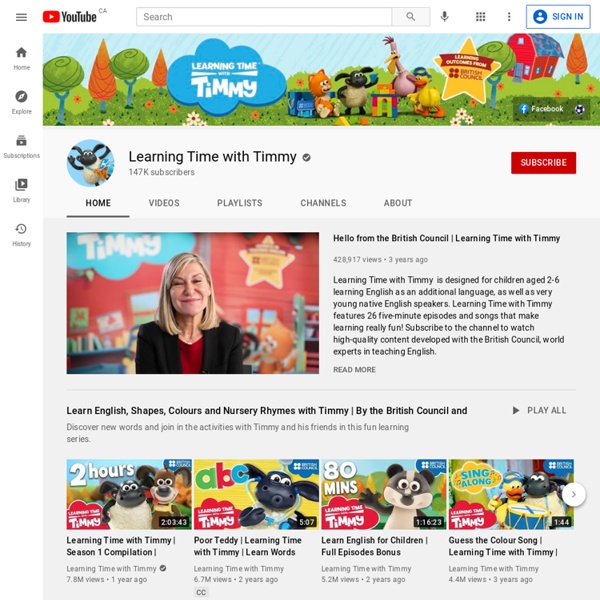



https://www.youtube.com/channel/UCNHDt6E1ZpHY-YECxEWccUA
Related: sah00000 • natashabrova • elefon • andressabt_freitas • BrC learn kidsPractical tips By Opal Dunn, educational consultant and author Introduction Young children learn English differently from most adults. Most have an innate ability to pick up English while taking part in activities, by making sense of what they are doing and picking up the adult’s language that accompanies the activity. You can find out more in the British Council booklet ‘How young children learn English as another language’, also available on the parents pages of the LearnEnglish Kids website.
Cohesion Cohesion is one of the two qualities that give a written or spoken text unity and purpose, the other being coherence. It refers to the use of linguistic devices to join sentences together, including conjunctions, reference words, substitution and lexical devices such as repetition of words, collocations and lexical groups. ExampleThe second sentence above has cohesive devices such as conjunctions (and, such as, including), articles (the), references (it), and collocations (join _____ together, lexical groups). In the classroomCohesion is an extensive area and can be approached at a discrete item level, e.g. practising article use or differing synonyms. Teachers can also make learners aware of the cohesive features of a text, asking them to identify examples of reference, substitution, lexical cohesion, and conjunction. Further links:
How to help your child learn English with YouTube videos Tracey Chapelton, education consultant and materials writer, has some advice for parents of young English learners, whose home language might not be English. To learn a language we need a lot of exposure to it. YouTube is beneficial if you are not a fluent English speaker, and want a more fluent model of English for your child. Helped along by the visuals of their favourite cartoon, children can watch their favourite characters involved in adventures, while absorbing the language. Repetition is also important for language learning. It helps us remember important words and expressions.
Practical tips By Opal Dunn, educational consultant and author Introduction Young children learn English differently from most adults. Most have an innate ability to pick up English while taking part in activities, by making sense of what they are doing and picking up the adult’s language that accompanies the activity. You can find out more in the British Council booklet ‘How young children learn English as another language’, also available on the parents pages of the LearnEnglish Kids website.
Primary Plus – English for kids aged 6-12 During the Covid-19 pandemic many of our teaching centres are closed. Classes will continue online and our teachers look forward to bringing their passion and expertise into your home. Primary Plus, developed by our team of English experts, will spark your child’s imagination, so they can express themselves with confidence that goes beyond their English language skills. Our new approach means your child will have a more rewarding learning experience, getting the most out of learning English at home with a combination of: live online classes with a specialist teacherinteractive independent study, set by your child's teacher to prepare them for the live lesson – all in a safe, easy-to-use learning environment.
The Art of Control Executive function — our ability to remember and use what we know, defeat our unproductive impulses, and switch gears and adjust to new demands — is increasingly understood as a key element not just of learning but of lifelong success. Researchers at the Center on the Developing Child at Harvard University describe executive function as an air traffic control system for the mind — helping us manage streams of information, revise plans, stay organized, filter out distractions, cope with stress, and make healthy decisions. Children learn these skills first from their parents, through reliable routines, meaningful and responsive interactions, and play that focuses attention and stirs the beginnings of self-control.
Substitution In speaking and in writing, we try to avoid repeating words, phrases or clauses. We use substitute forms to do this: A:Pam always brings us back chocolates when she travels.A:She brought some Belgian ones from her last trip, which were delicious. Moodle What makes illustrated storybooks such a good resource for teaching young learners of English? The British Council’s Gail Ellis, co-author of a storytelling handbook for primary English language teachers, explains. Listen to an interview with Gail in our podcast and register for her webinar taking place on Thursday, 2 October. Illustrated storybooks provide an ideal resource for helping children learn English. This is because children love listening to stories. Storybooks present language in familiar and memorable contexts, and high quality illustrations help children understand as they match what they hear to what they see.